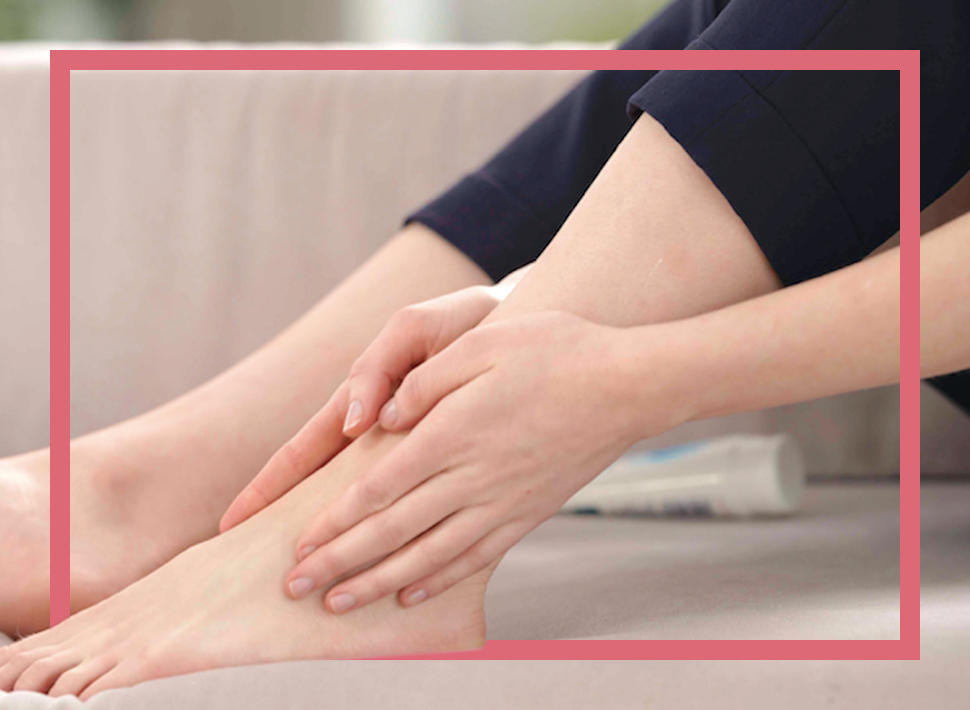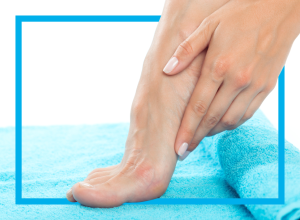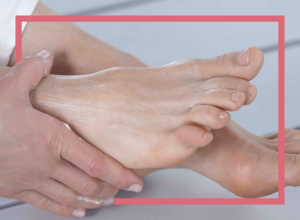Our feet carry us through life. Day by day, step by step. No wonder they deserve special attention. However, it is often the feet that show how much external influences and a lack of care can damage the skin: Dry patches, rough heels and flaky skin are not uncommon. A regular foot scrub can help to gently remove dead skin cells, stimulate cell renewal and keep the skin supple.
Why it makes sense to exfoliate your feet
The skin on the feet is significantly thicker than on other parts of the body. At the same time, it is often drier as it has fewer sebaceous glands. Added to this is the friction caused by shoes, prolonged standing or incorrect footwear: ideal conditions for rough skin and callus formation.
The term “peeling” comes from the English word “to peel”, which means “to peel” or “to peel”. Appropriately, exfoliation supports
Foot scrub: the different variants
There are different forms of peeling. Each has its own specific benefits:
1. mechanical peelings
These scrubs contain fine abrasive particles such as sand, salt or crushed seeds. They work through friction and are particularly effective when massaged into damp skin. They should not rub too hard. Gentle pressure is sufficient.
Suitable for: People with more robust skin or slight keratinization.
2. enzymatic peelings
These peelings use natural enzymes to gently remove dead skin cells. They work completely without friction. Enzymatic peels are considered to be particularly kind to the skin and are therefore also suitable for more sensitive skin types.
Suitable for: People with sensitive or very dry skin.
3. exfoliating socks or masks
These are special foot masks that are soaked in a peeling-like solution . They are worn over a longer period of time and remove the top layers of skin over the following days.
Suitable for: People with robust, calloused skin and without skin sensitivities.
Simply make your own foot scrub
If you rely on natural ingredients and want to personalize your foot care, you can easily make your own scrub at home.
How to use a foot scrub correctly
A foot scrub is most effective when it is embedded in a small skincare routine. Start with a
When and how often should a foot scrub be used?
As with many skincare routines, the same applies to foot scrubs: less is often more. As a rule, once or twice a week is enough to gently remove dry areas of skin and support natural skin renewal. If you have particularly sensitive skin, you should pay attention to your body’s signals and exfoliate even less frequently if necessary. It is important to give your skin sufficient care and rest after exfoliating. This will keep it supple in the long term without overstimulating it. In the summer months, when the feet are subject to greater stress, a slightly more frequent rhythm may be advisable, while in winter the focus is more on moisturizing care.
Caution: Diabetics should generally refrain from using foot scrubs. Their skin is often very sensitive and susceptible to injury. This is why coarser scrubs in particular can lead to injuries more quickly and ultimately to infections.
Conclusion: Well-groomed feet through regular exfoliation
A regular foot scrub can do a lot for the health and well-groomed appearance of your feet. It removes dead skin cells, smoothes rough patches and optimally prepares the skin for subsequent care. Whether mechanical, enzymatic or with special exfoliating socks – the decisive factor is that the method suits your individual skin type and is applied gently.
At least as important as the exfoliation itself is the subsequent care for beautiful and healthy feet. Only well cared for skin can remain supple in the long term. Care products with natural ingredients that strengthen the skin barrier and moisturize at the same time are particularly recommended. The microalgae active ingredient spiralin, which we specifically use in our products, supports precisely these processes.
Experten-Tipp entstand in Zusammenarbeit mit:
Patrick Günther
Patrick Günther completed his pharmacy studies in Hamburg and, after obtaining his licence to practise, worked for several years in marketing and sales in the pharmaceutical industry. In 2003, he took over ocean pharma, the company founded by his father in Reinbek near Hamburg in 1978. Together with his business partner, he patented the important processing and standardisation process for the microalgae active ingredient Spiralin® and developed a wide range of medical cosmetics and foot care products based on Spiralin®.







